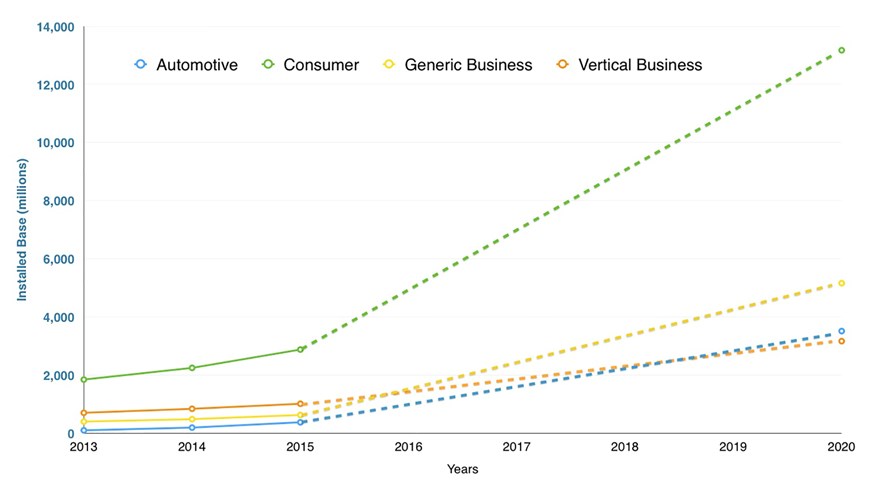
© Gartner / TTV
A new study from research firm Gartner suggests that there will be 25 billion connected devices in use by 2020, and that the Internet of Things (IoT) will support total services spending of $263 billion. At the moment, they are forecasting 4.9 billion devices during 2015, which will be an increase of 30 per cent from this year, and spending of $69.5 billion. It believes the IoT sector has already become a powerful force for business transformation, and its disruptive impact will be felt across all industries and all areas of society.
“The digital shift instigated by the Nexus of Forces (cloud, mobile, social and information), and boosted by IoT, threatens many existing businesses,” said Jim Tully, VP and distinguished analyst at Gartner. “They have no choice but to pursue IoT, like they’ve done with the consumerisation of IT.”
Tully believes that consumer applications will drive the volume of connected things, while enterprise will account for most of the revenue. Gartner estimates that 2.9 billion connected things will be in use in the consumer sector in 2015 and will reach over 13 billion in 2020 (see graph: although note that data has only been made available to press for four years over the period, hence we have added the extrapolated dotted lines to show the general trend). Of the four identified sectors, Gartner says the automotive one will show the highest growth rate at 96 per cent in 2015.
Manufacturing, utilities and transportation will be the top three verticals using IoT in 2015 (accounting for 736 million connected devices in use). However, by 2020 the ranking will change with utilities in the top spot, manufacturing second and government third (accounting for 1.7 billion devices).
Smart cities are key markets
“Government will take the number three spot as it invests in smart street and area lighting for energy saving reasons,” said Tully. “Utilities will move to the number one position because of investment in smart meters.”
The addition of digital sensing, computing and communications capabilities provides both new and previously passive objects with a "digital voice" and the ability to create and deliver an information stream reflecting their status and that of their surrounding environment. Gartner says that such developments radically change the value proposition, creating new services and usage scenarios and driving new business models.
“CIOs must understand that the most disruptive impact and competitive threats – and, equally, the greatest competitive opportunities – arise not from simply digitalising a product or service, but from creating a new business model and value proposition,” added Steve Prentice, VP and Gartner Fellow. “Organisations must straddle the tension of all the information available from smart things by balancing their desire to collect and analyse it with the risk of its loss or misuse.”
The IoT also highlights the relationships between information security, information technology security, operational technology security and physical security. Enterprises will have to resolve issues around the governance, management and operation of this expanded security. Gartner believes that by the end of 2017, over 20 per cent of organisations will have digital security services devoted to protecting business initiatives using devices and services in IoT.
“The number of connected intelligent devices will continue to grow exponentially, giving smart things the ability to sense, interpret, communicate and negotiate," said Prentice. “CIOs must look for opportunities to create new services, usage scenarios and business models based on this growth.”
Email Newsletters
Sign up to receive TelecomTV's top news and videos, plus exclusive subscriber-only content direct to your inbox.




